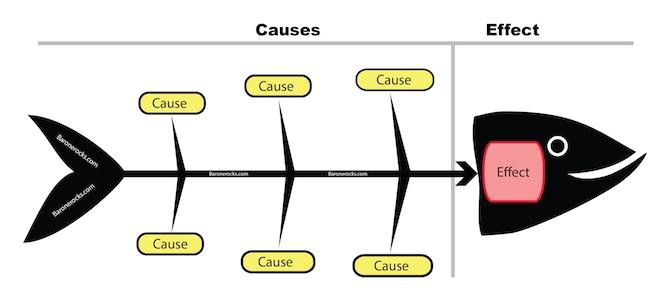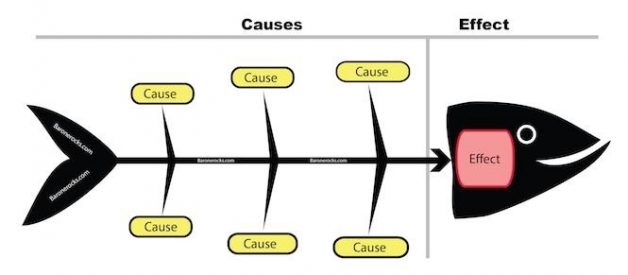
Any problem-solving activity includes problem defining, clarifying its causes, setting priorities, choosing alternatives for a better solution, and directly implementing this solution.
The ability to timely resolve internal and external product and team problems and make responsible decisions is what any junior PM should learn at the start of career. In this post, I?ll sort out the process of problem solving, and also describe some effective methods and exercises for teams.
Smart problem solving motivates team members to achieve better results than they can imagine. Developing problem-solving skills will improve teamwork and ability to deal with complex situations. Team collaboration aimed at solving business problems will be your source of power regardless of what simple exercises, fun games or a scientific method you?ll choose for this aim.
The main idea is that any problem-solving activity will benefit and eliminate obvious and hidden barriers.
Studying new techniques and approaches, we expand the review on the problem and increase personal and team effectiveness.
There is a system approach to problem-solving that includes five steps:
- Identifying the problem
- Revealing the reasons for its occurrence
- Generation of ideas
- Choosing the best solution
- Action
Identify the problem
The correct definition of the problem is the right step towards it solving. This is a very important stage, that directly influences how you try to solve it.
For example, you?ve received a critical comment from one of your users/clients. The options for resolving the issue can be different depending on how you define this problem.
If you decide that the reason is in the low productivity of a specific team member, you will develop various solutions aimed at optimizing his her work.
Find out the reasons
Once the problem is determined, it is worth digging deeper and figuring out what caused it. To determine the cause-effect relationships, the Ishikawa diagram or the fishbone diagram is often used.

This analysis is quite effective because it helps to make sure that your decisions are aimed at eliminating the actual causes, rather than the symptoms of the problem. If the solution found removes only the symptoms instead of the actual cause, then the problem is likely to happen again.
Generate ideas
Once the difficult work to identify the problem and find out its causes is completed, it?s time to show creativity and begin to ?fantasize? ideas. A brainstorming session or discussions within any team building activity will be the excellent solution.
Choose the best solution
After your list of ideas that can solve the problem becomes quite long, you need to choose a single method of solution. At this stage, you have to work with priorities and this skill is one of the most important for product managers.
A simple matrix used in Lean Prioritization method will help to quickly and clearly define what is urgent and what is not.
The best outcome for your problem is the solution to the highest level on the matrix. This matrix can be visualized on a piece of paper:

There is one more option ? to take advantages of the available product management tool. Such platforms as Hygger, MindTools or ProdPad allow using friendly priority charts.

Act
When the best solution is found, it?s time to take action. If the decision involves several actions or requires additional efforts of the other team members, it is recommended to create an action plan and treat it as a mini-project.
Using this simple five-step approach will certainly improve the effectiveness of your problem-solving skills.
This approach (with optional changes) was taken as the basis for many famous techniques. Let?s dive into some of them.
Problem solving methods
Root ?ause Analysis
Root cause analysis (RCA) is an approach for identifying the underlying causes of a problem. The method is typically used when something goes badly. However, it is sometimes used when something goes well.
Problem-solving, incident investigation and root cause analysis are fundamentally connected by 3 basic questions:
- What?s the problem?
- Why did it happen?
- What should be done to prevent it from happening again?
RCA consists of 3 steps:
- Define
Define the problem by its impact on overall goals.
2. Analyze
Visualize the problem. It will explain and reveal all of the causes.
3. Solve
Prevent any negative impact to the goals by choosing the best solution. Effective solutions should make a change to how people execute processes.
There are typical types of causes:
- Physical causes. They are tangible and material.
- Human causes. When people did something wrong or did not do something that was required. Human causes typically lead to physical ones.
- Organizational causes. It?s about a system, process or policy that people use to make decisions or do their work is faulty.
The RCA approach looks at all three types of causes. It involves investigating the patterns of negative effects, finding hidden flaws and defining specific actions that contributed to the problem.
CATWOE
CATWOE is an acronym that stands for
- Customers
- Actors
- Transformation process
- World view
- Owners
- Environmental constraints
It looks like a simple checklist to find solutions to problems. With its help, you may find surprising solutions and stimulates multiple approaches.
CATWOE makes it possible to identify problem areas, look at what companies desire, and which solutions can influence the stakeholders.
- Customers ? Who they are and how will the problem affect them?
- Actors ? Who is involved in the problem? Who should be involved to solve this problem?
- Transformation process ? What processes are affected by this problem?
- World view ? What is the general picture of what is happening? Are there any global consequences?
- Owner ? Who owns the process/situation and what role will he/she play in the decision?
- Environmental constraints ? Are there any restrictions that can affect the end result?

All these elements open up new perspectives and help to delve into the study of the problem. The CATWOE method provides more comprehensive data on the problem and helps determine the severity of the problem before actively involving other team members in the decision.
5 Whys method
This approach will help to get to the roots of a problem quickly. You may use it for troubleshooting, quality improvement and problem-solving.
This method?s simplicity gives it great flexibility and it combines well with other methods and techniques.
5 Whys uses a 6-step flow:
- Team gathering. Discussion should combine those who are directly related to the problem.
- Determining the problem, if it is not defined. The definition must be agreed by all team members.
- The key ?Why??. Ask why the problem been occurred. Use only facts without speculation.
- The rest ?Whys?. Ask this question again. Continue until the main problem is found. There may be not five questions but more or less.
- Action plan. When the team identified the root cause, it?s time to discuss the list of measures and actions to avoid a recurrence of the problem in the future.
- Analysis. Analysis is also very important. Discuss how effective the measures were, whether they helped to get rid of the problem or reduce its impact. If the goal has not been achieved, it is necessary to repeat the process.
It is important to move quickly from the answer to the next question, which will allow you to determine the overall picture before consciousness comprehends the problem.
If known methods and techniques require study, then the simplest exercises and games for team problem solving can be applied without special preparation and without taking up much time.
Business games for problem solving
Business games are a more informal way to solve problems. Such activities are usually aimed at developing team communication, mutual assistance, delegation, adaptation and other useful qualities and skills to the team.

Such activities will not be suitable for each team because they require quite a sufficient level of receptivity from team members, flexible thinking, and creative approach.
It?s important for the manager organizing such activities to understand that there will be no winners or losers here. Here are some popular examples of such activities:
Wool networks
This collaborative game will be helpful for evolving decision-making skills.
Divide your team into teams of equal numbers. Give each team a ball of yarn. They will need to create a web using the yarn. Give them 10 minutes for this objective. When they have finished, mix the teams so that every team has a web other than their own.
Every team should select one person and blindfold him. The blindfolded person should unwind the web with the help of verbal instructions of his/her teammates.
It requires concentration and clear directions. The first team that has dismantled the web wins.
Eggs Drop
The simple activity improves decision-making skills and team collaboration.
You will need a box of eggs, old newspapers, tapes, straws, plastic wrap, balloons, rubber bands, and other stuff that can be used for manual construction.
Choose a free area (a parking lot) that you can make messy.
All members should be divided into the teams. Each team gets an egg and selects some of the construction materials. It will be 20 minutes to create a carrier for eggs with the help of the construction materials that will protect it from breaking.
Drop every carrier off a tall table or ladder and see who?s carrier can protect the egg better. If several eggs survive, keep increasing the height until only one egg is left.
Human knots
You?ll need nothing material to organize this activity. It will take 5?7 minutes. The main idea of the game is to evolve collaboration, adaptability and creative strategizing.
You need to ask everyone to stand in a circle and hold hands with two people who aren?t directly next to them. The team will get tangled very quickly.
Then ask them to untangle the knot without letting anyone?s hand. Their aim is to form a perfect circle.
Most likely, they will not succeed, but you will be surprised by the interesting and unusual attempts they will make to get a quick and correct decision.

Takeaways
Actually, there is no product that has escaped challenges during its life cycle. Having problems is a rule.
The key is to pay attention to them in time and take the right decisions. There are various methods, techniques and fun nonformal games for solving problems. Practice shows that they can rescue teams and help to find successful solutions.
What methods and problem solving exercises do you use?

